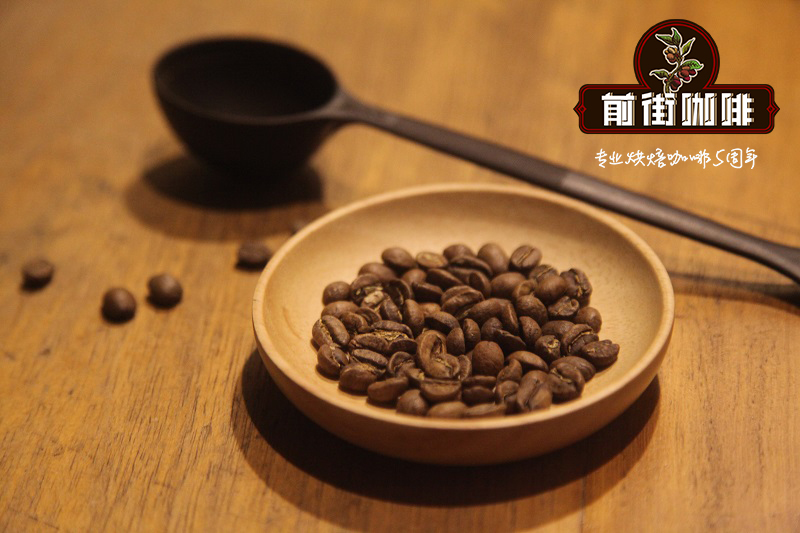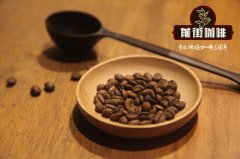Brazilian coffee beans collectively known as Brazilian coffee beans taste as smooth and sweet as vanilla cream

Professional coffee knowledge exchange more coffee bean information please follow the coffee workshop (Wechat official account cafe_style)
Qianjie-introduction to Brazilian coffee
When it comes to coffee, people always think of Brazil. It is a miracle that this country, which originally did not grow coffee, became the largest coffee grower and shipper in the world after it was introduced in 1720.
Although, for some time, Brazilian coffee beans have not been a rare good in the eyes of coffee lovers. But no one can deny that Brazil has made a great contribution to the coffee industry. It can even be said that it is of great importance. This is not only in terms of production, but also from the perspective of the rule system. The COE Cup of Excellence, which was born in Brazil in 1999, can be said to be the flagpole of modern boutique coffee.
We know that in today's boutique bean field, two score systems are often introduced, one is SCAA score, the other is COE score, while in the industry, COE system has more gold content for coffee beans.
In Brazil, the altitude is not high compared to other American bean-producing countries, and there are many producing areas below 1000 meters above sea level, so this causes the beans of Brazilian beans to be generally soft, and after roasting, most Brazilian coffee cannot express such a clear sour flavor as Central American high-altitude hard beans or African beans. But this is not to say that Brazilian coffee beans are mediocre. Their palatable taste and sweetness like brown sugar, nuts, chocolate and even vanilla cream still appeal to a large number of coffee lovers.
At present, the main varieties of Brazilian beans are: red bourbon, yellow bourbon, New World and Kaduai (common in diamond plateau producing areas).
Before 1990, almost all of Brazil adopted the method of solarization. But times have changed. With the improvement of Brazil's national strength, the progress of science and technology has to meet the needs of the market at the same time. In fact, all kinds of treatment methods (washing, solarization, semi-washing, anaerobic fermentation, etc.) can be seen in Brazil today. Among them, Brazil's original semi-washing treatment is the most famous. Qianjie-introduction to Brazilian coffee
When it comes to coffee, people always think of Brazil. It is a miracle that this country, which originally did not grow coffee, became the largest coffee grower and shipper in the world after it was introduced in 1720.
Although, for some time, Brazilian coffee beans have not been a rare good in the eyes of coffee lovers. But no one can deny that Brazil has made a great contribution to the coffee industry. It can even be said that it is of great importance. This is not only in terms of production, but also from the perspective of the rule system. The COE Cup of Excellence, which was born in Brazil in 1999, can be said to be the flagpole of modern boutique coffee.
We know that in today's boutique bean field, two score systems are often introduced, one is SCAA score, the other is COE score, while in the industry, COE system has more gold content for coffee beans.
In Brazil, the altitude is not high compared to other American bean-producing countries, and there are many producing areas below 1000 meters above sea level, so this causes the beans of Brazilian beans to be generally soft, and after roasting, most Brazilian coffee cannot express such a clear sour flavor as Central American high-altitude hard beans or African beans. But this is not to say that Brazilian coffee beans are mediocre. Their palatable taste and sweetness like brown sugar, nuts, chocolate and even vanilla cream still appeal to a large number of coffee lovers.
At present, the main varieties of Brazilian beans are: red bourbon, yellow bourbon, New World and Kaduai (common in diamond plateau producing areas).
Before 1990, almost all of Brazil adopted the method of solarization. But times have changed. With the improvement of Brazil's national strength, the progress of science and technology has to meet the needs of the market at the same time. In fact, all kinds of treatment methods (washing, solarization, semi-washing, anaerobic fermentation, etc.) can be seen in Brazil today. Among them, Brazil's original semi-washing treatment is the most famous.
In short: Qianjie is a coffee research hall, happy to share the knowledge about coffee with you, we share unreservedly just to make more friends fall in love with coffee, and there will be three low-discount coffee activities every month. The reason is that Qianjie wants to make more friends drink the best coffee at the lowest price, which has been Qianjie's tenet for 6 years!
END
Important Notice :
前街咖啡 FrontStreet Coffee has moved to new addredd:
FrontStreet Coffee Address: 315,Donghua East Road,GuangZhou
Tel:020 38364473
- Prev

Which coffee beans are better in Brazil? Brazilian Santos coffee has moderate acidity and slightly sweet taste.
Professional coffee knowledge exchange more coffee bean information please follow the coffee workshop (Wechat official account cafe_style) front street-Brazil Santos coffee Brazil Santos coffee, Brazilian coffee is the most valued, but also the most famous one. For Brazilian Bourbon Santos Coffee, there are no outstanding advantages, but there are no obvious shortcomings.
- Next

How about coffee in Dominica? Dominican coffee is rich and rich in aroma and warm.
Professional coffee knowledge exchange more coffee bean information please follow the coffee workshop (Wechat official account cafe_style) front street-Dominica Coffee introduction Dominica is the second largest country in the Caribbean. The history of coffee cultivation in Dominica can be traced back to the early 18th century. It is one of the first countries in the region to grow coffee, and the coffee is of high quality. Most coffee in Dominica
Related
- Beginners will see the "Coffee pull flower" guide!
- What is the difference between ice blog purified milk and ordinary milk coffee?
- Why is the Philippines the largest producer of crops in Liberia?
- For coffee extraction, should the fine powder be retained?
- How does extracted espresso fill pressed powder? How much strength does it take to press the powder?
- How to make jasmine cold extract coffee? Is the jasmine + latte good?
- Will this little toy really make the coffee taste better? How does Lily Drip affect coffee extraction?
- Will the action of slapping the filter cup also affect coffee extraction?
- What's the difference between powder-to-water ratio and powder-to-liquid ratio?
- What is the Ethiopian local species? What does it have to do with Heirloom native species?

